It is well known that customer retention is much more affordable than acquiring new customers—but in a constantly changing digital marketing landscape, it is important to learn how to engage your customers without annoying them.
Continue reading for insights on how to effectively engage customers, along with customer engagement examples from companies that are doing it right, or jump to our infographic.
What Is Customer Engagement?
Customer engagement is a strategy used to keep customers interested in your brand, often executed through sophisticated customer engagement platforms that enable seamless interactions across multiple touchpoints. It combines cross-channel marketing tactics, including personalization and relationship building.
Customers expect personalized engagement—66% of customers expect companies to understand their unique needs.* Tailored messages are also a high priority for engaged customers, with 76% saying they prefer different channels for different types of messages. Additionally, 95% of customers say they’re more likely to remain loyal to a brand that they trust.*
8 Inspiring Customer Engagement Examples
With personalization, tailored channel messaging, and trust being the top factors influencing customer engagement, let’s look at some brands that are doing their customer engagement plan right.
1. Petco: Start With a Warm Welcome
Starting on the right foot (or paw) can set the groundwork for a long and happy customer relationship. Welcome messages hold a staggeringly high open rate of 50%, making them 86% more effective than standard newsletters.*
Long story short: first impressions matter.
Some companies mistakenly think their job is done when a new user is acquired, but in reality, signup is just the first step in a continuous customer relationship.
Petco’s welcome email is tailored, easy to scan, and has a clear and relevant mid- and end-CTA. Their messaging elicits emotion with a customized header welcoming you “to their family” and provides a simple value proposition: that their goal and priority is the same as yours as a pet owner — keeping your pet happy and healthy. Petco positions itself in a partnership with pet owners using their welcome email to align the brand with your love for your pet.
Petco’s welcome email is an excellent customer engagement example that sets the stage for a meaningful relationship instead of a transactional one.

Key takeaways:
- Make your welcome email easily scannable with a clear value proposition
- Position your messaging to appeal to customer’s emotions
- Prompt users to learn more about your rewards programs and other products
2. Uber Eats: Personalize Your Messaging
Personalization isn’t just nice to have; it’s essential for an effective digital marketing strategy. Plus, surface-level personalizations like the user’s first name won’t cut it — nowadays, 64% of customers expect tailored customer engagements that are specifically based on past interactions.*
Users expect dynamic content that’s relevant to their needs. A great example of this is Uber Eats, which uses dynamic content to personalize their messaging with restaurants specific to the user’s location and past behavior.
Uber Eats also uses behavior-triggering messaging to highlight missed opportunities and entice users to re-engage. While not every piece of messaging needs to be personalized, Uber Eats does a great job at making users hungry for more of what they love — literally.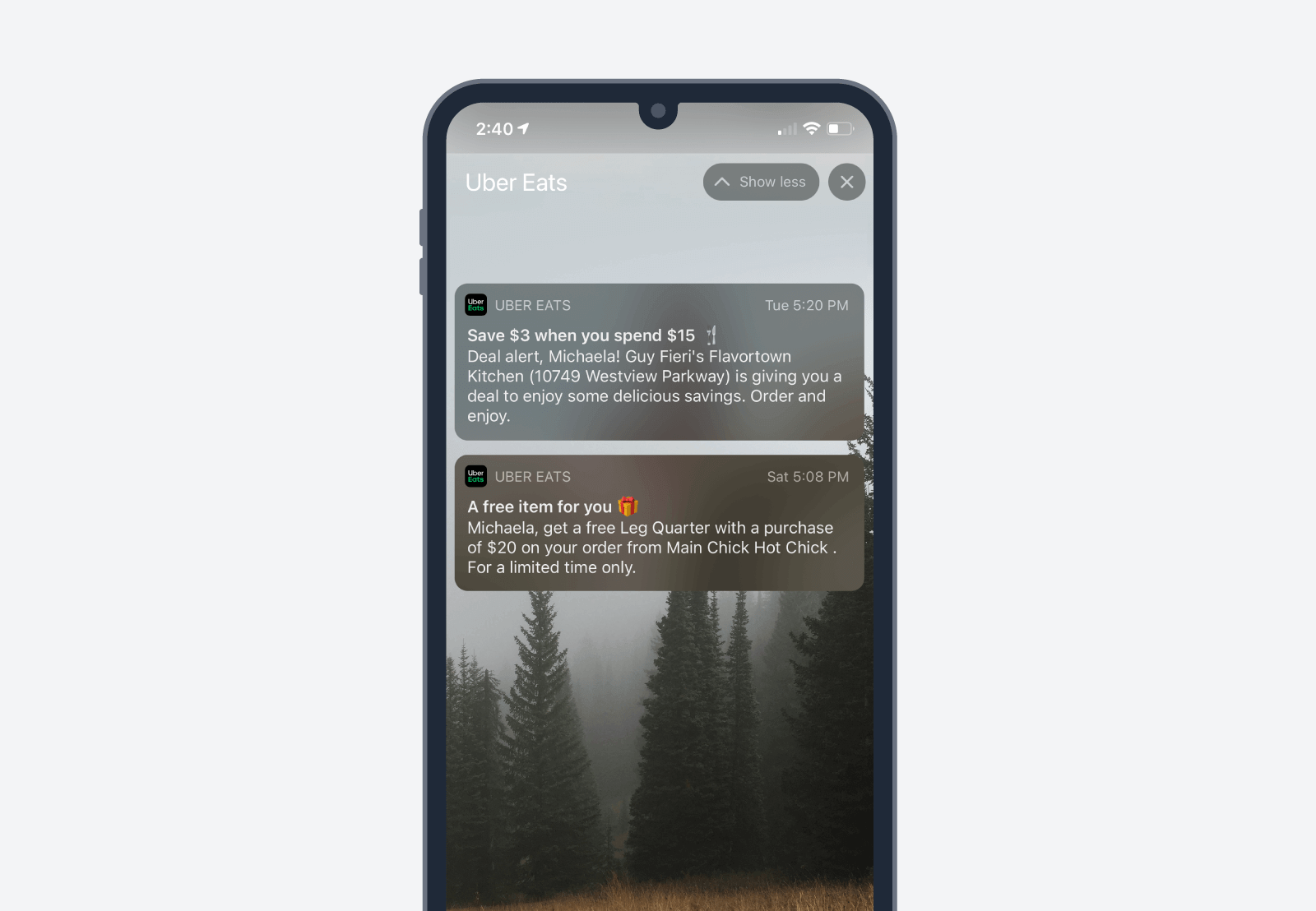
Key takeaways:
- Use dynamic content to tailor messaging based on behavioral data
- Prompt users to re-engage with triggered messaging
- Make sure your messaging makes sense for your brand
3. Warby Parker: Encourage Omnichannel Engagement
Seeing as 74% of consumers have used multiple channels to start and complete a transaction, creating a cohesive cross-channel messaging strategy is key for an effective customer engagement marketing strategy.*
However, online to offline engagement is a particular pain point for many e-commerce retailers without a physical storefront. Take Warby Parker, a D2C eyewear company that operates primarily online. Despite eyeglasses seemingly being an industry that is predominantly brick-and-mortar, Warby Parker built an online eyewear behemoth that no one saw coming.
Warby Parker offers an augmented reality (AR) try-on, so customers can virtually test out glasses from the comfort of their own homes. From there, customers can have multiple pairs of glasses delivered to them for complimentary try-on at no additional cost.
During the home try-on, Warby Parker sends trigger emails with playful yet effective CTAs, prompting the user to complete their purchase. Warby Parker is an excellent customer engagement example for using online to offline engagement for a competitive advantage in an unexpected industry.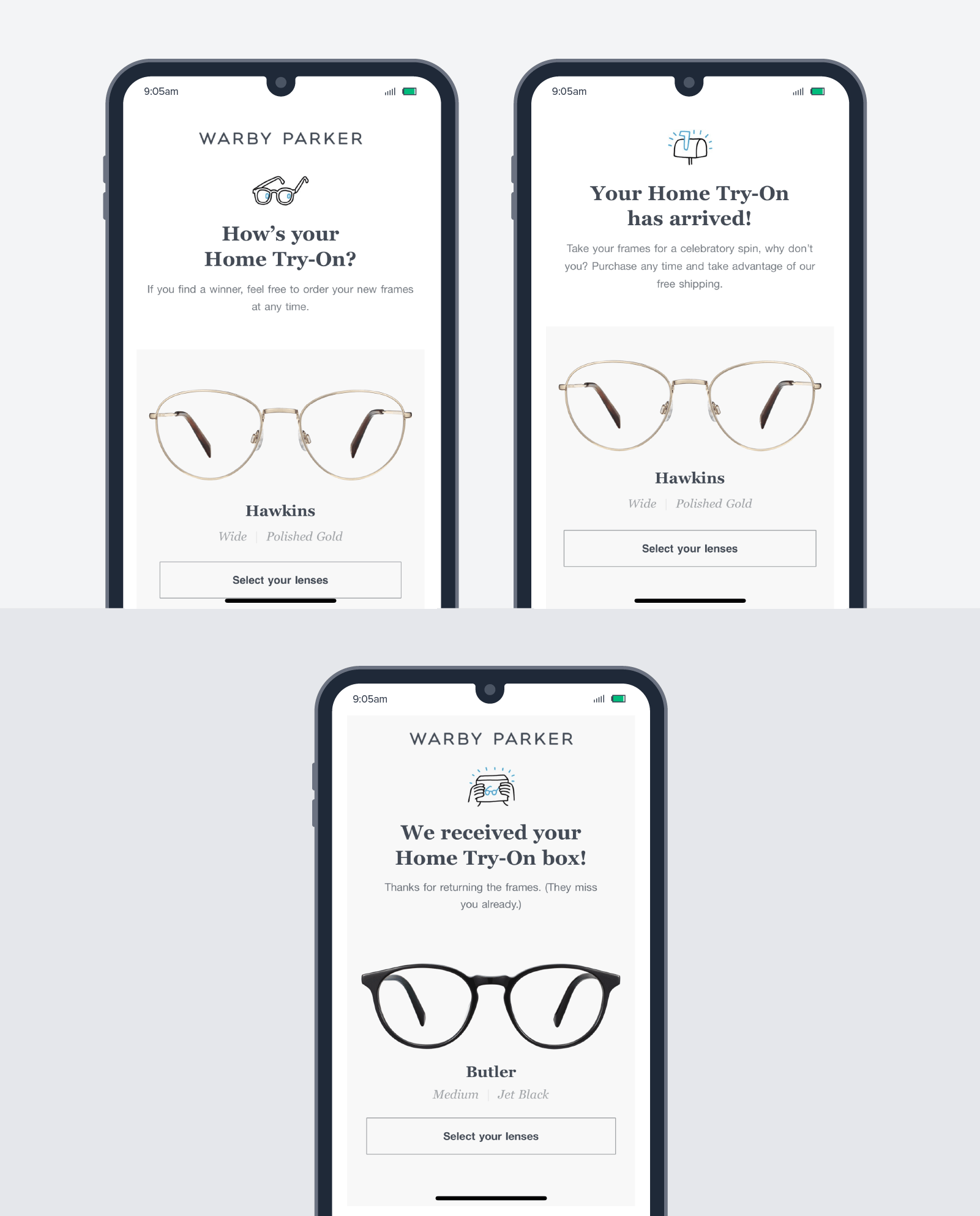
Key takeaways:
- Serve customers where they are to guide them through the user journey seamlessly
- Create consistent brand messaging across platforms to keep users engaged
- Use augmented services to differentiate yourself from competitors
4. Mastercard: Be Loyal to Your Customers, and They’ll Be Loyal to You
Did you know that high-performing customer loyalty programs can make consumers 80% more likely to choose your brand over competitors?*
We sat down with Mastercard CMO Raja Rajamannar in a recent episode of CleverTap Engage, our podcast and video interview series where we highlight leading CMOs that achieve meaningful customer engagement. His advice on loyalty programs may surprise you.
Rajammanar says that the concept of brand loyalty is entirely backward and that “brands should be loyal to the consumers, not the other way around.” Put simply, marketers should focus less on tangible prizes and instead shift to creating relevant experiences and satisfying individual needs.
Unsurprisingly, Mastercard is a great customer engagement example. They’ve invested in programs like Masterpass, a digital wallet service, to give their customers the convenience and security of a single payment system, accessible at their fingertips. Mastercard’s customer engagement strategy has successfully positioned the brand not just as a vendor, but as a partner.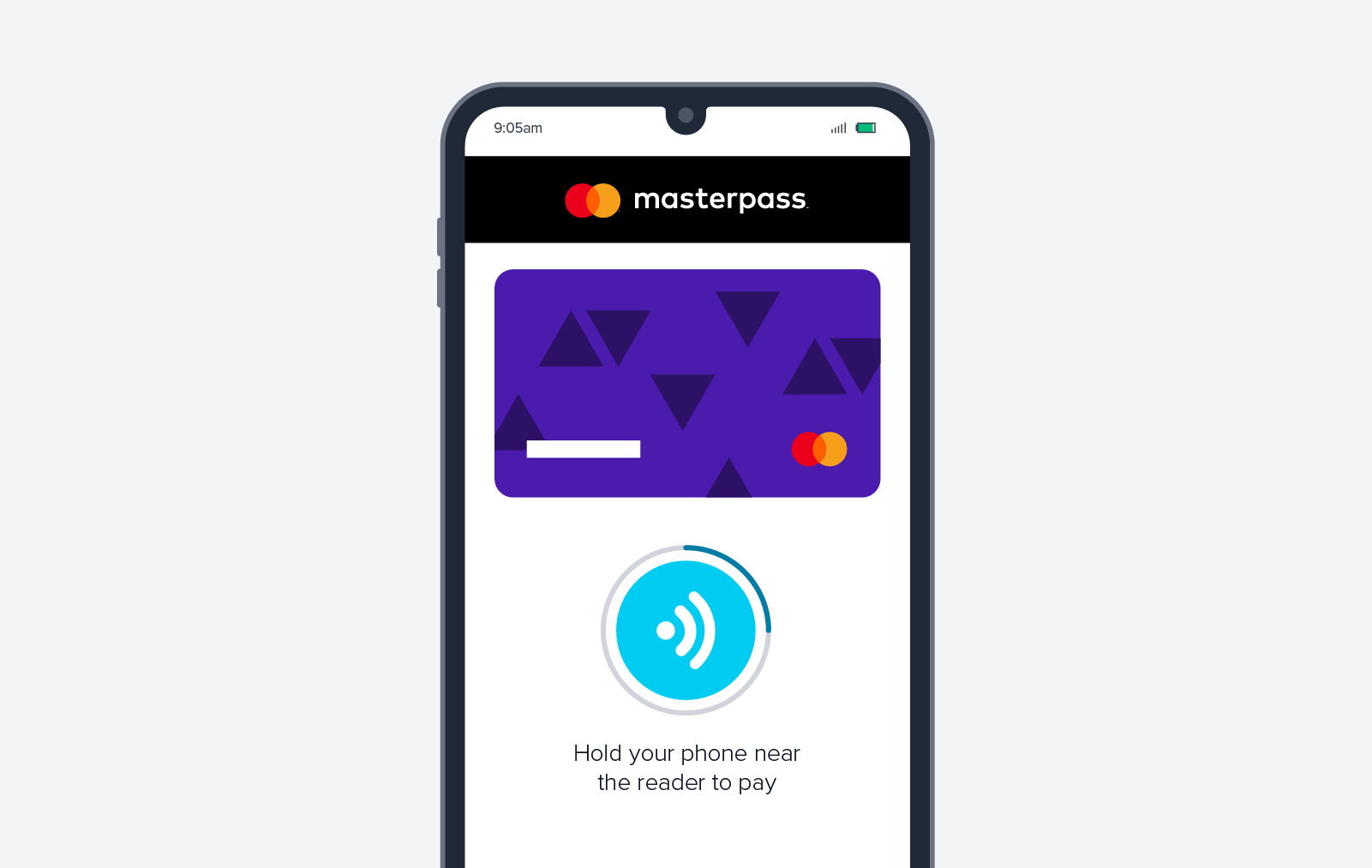
Key takeaways:
- Build relationships with customers by creating relevant experiences and satisfying individual needs
- Use predictive analytics to track the ROI of your customer loyalty investment
- Give users genuine value-adds instead of relying solely on tactics like points
5. Whole Foods: Leverage Conversational Marketing
Combine the many touch points on a user journey with the 82% of consumers* who want immediate responses and you’ll see why marketing automation and AI, like chatbots, are becoming such a popular tool nowadays.
But just having a few pre-programmed chatbot responses isn’t enough. Customers want chatbots to mimic the experience of speaking with a human — this is where conversational marketing comes into play.
Conversational marketing is based on the principle that customer relationships are built one interaction at a time. Seeing as 40% of customer interactions will be automated through AI by 2023,* companies that are investing in conversational marketing now are set to see dividends for years to come.
A great example of leveraging conversational marketing for customer engagement is Whole Foods, whose Facebook Messenger chatbot can send customized recipes based on user’s responses. People can leverage emojis, phrases, or ingredients to discover new meals.
The Whole Foods chatbot succeeds as a great customer engagement example because they meet users where they are, without an additional app download. In a brilliant stroke of inbound marketing, Whole Foods patrons are reaching out to the company to source recipes — no app download or trigger required.
Key takeaways:
- Augment chatbots with customer service representatives to give customers quick answers
- Prevent disengaged customers by reducing wait time for simple answers
- Use natural language and human elements to make your chatbots mimic the experience of speaking with a human
6. Sephora: Solicit Feedback
It’s no secret that getting feedback from customers is one of the best ways to measure the customer experience. Asking for customer feedback is an impactful customer engagement example as customers want to feel heard, especially when an interaction elicits a strong emotional response.
However, many won’t go out of their way to provide feedback. On average, only one in 26 customers will complain. The rest will churn.*
Actively soliciting feedback is vital for a strong customer engagement plan. Take Sephora, a beauty retailer with both online and in-store locations. After speaking with their chatbot or a team member, you’re prompted with a quick survey question to gauge how customers feel after their interaction. Capturing feedback via the same channel rather than sending a follow-up email reduces friction for the users and increases the likelihood of response. It also increases the amount of time users spend on your platform.
Sephora’s feedback strategy is two-fold. First, they gauge consumer sentiment to determine if they were satisfied with the interaction. Next, they ask what alternative method of contacting Sephora the customer would have used to help inform their CX moving forward.

Key takeaways:
- Minimize friction by removing the need to gather demographic information
- Ask for feedback on the same platform to get contextual data
- Keep it short and simple to make responding as easy as possible for the user
7. Spotify: Nurture Leads With Value Propositions
Lead nurturing emails are proven to get 4–10 times the response rate of traditional email blasts,* yet only 29% of brands nurture their existing customers beyond the initial purchase.*
Not all nurturing campaigns are created equal. Generalized email blast follow ups run the risk of feeling more like spam — that’s why following up with value propositions is crucial for customer engagement.
Spotify provides one of the most effective customer engagement examples for lead nurturing by following up with value propositions. They keep their value add short and sweet: music curated for you, based on your listening habits.
Once users click into the app, they’re presented with customized mixes and emails titled “Only You”. Then, each of the mixes then have the tagline “Made for [user name]” to drive home the personalization.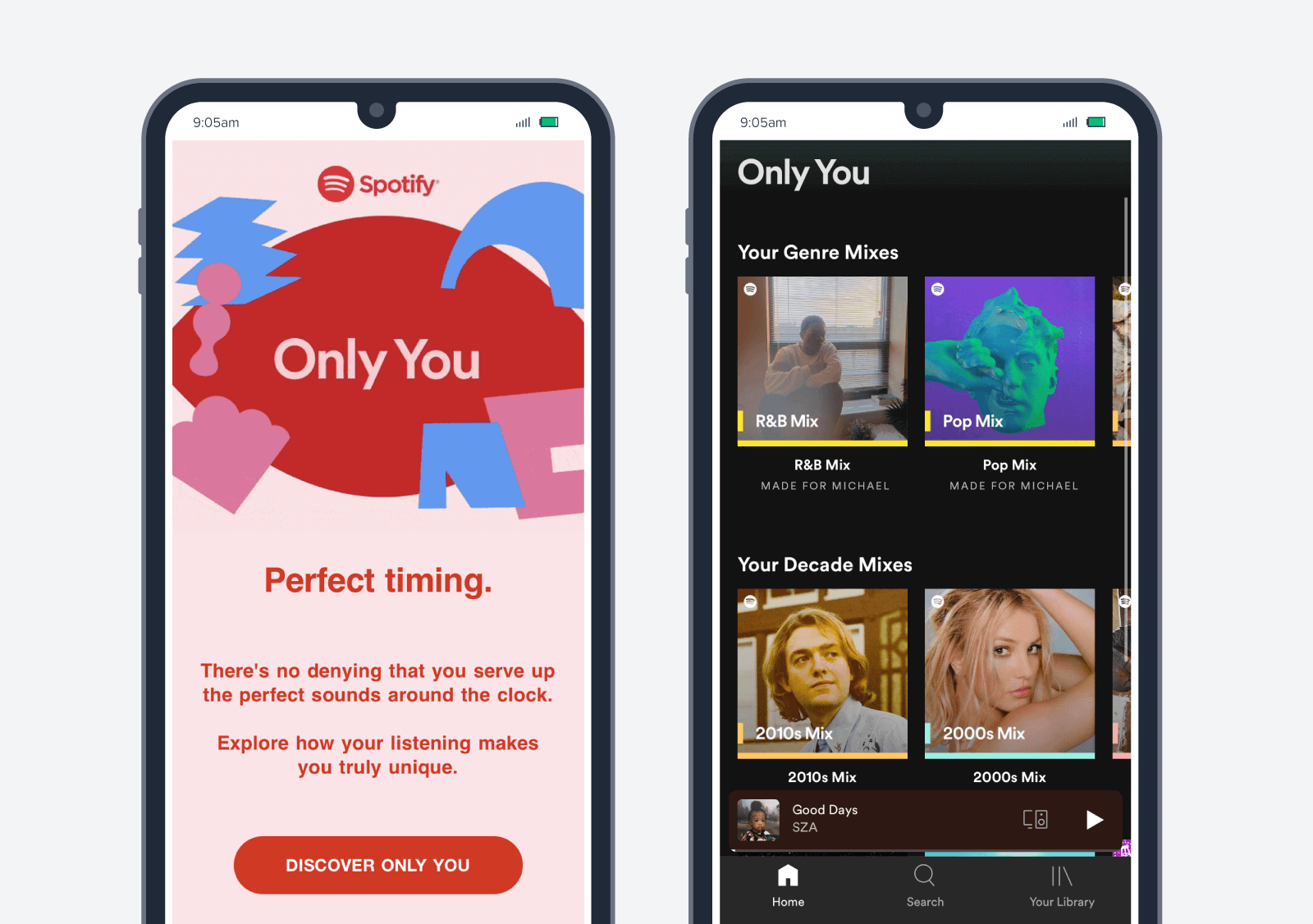
Key takeaways:
- Make your unique value proposition the focus of your followup
- Highlight feature announcements or other personalized milestones for a clear value add
- Present a results-based approach by focusing on what the customers get out of it
8. Bird: Re-Engage Customers With Win-Back Campaigns
Attracting a new customer costs five times more than retaining an existing one.* That’s why it’s worth investing in win-back campaigns, which are sent to users who are dormant and at risk of disengaging.
Win-back campaigns serve as excellent customer engagement examples. The proof is in the numbers: research has shown that 45% of customers who receive a win-back email will open future emails from your brand.* Additionally, win-back campaigns can increase customer lifetime value (CLV), or the amount of business a company can expect to earn during their relationship with a customer.
Bird, one of the first e-scooter rideshare companies, does this exceptionally well. Bird adds a human element with the conversational subject line “We miss you,” which is proven to see an average open rate of 24%.*
30% of dormant users say that a discount would move the needle and get them to re-engage with the brand.* With an exclusive discount code and a CTA that reads “fly with us,” Bird reminds the user what they’re missing and makes the appeal of re-engaging with their brand crystal clear.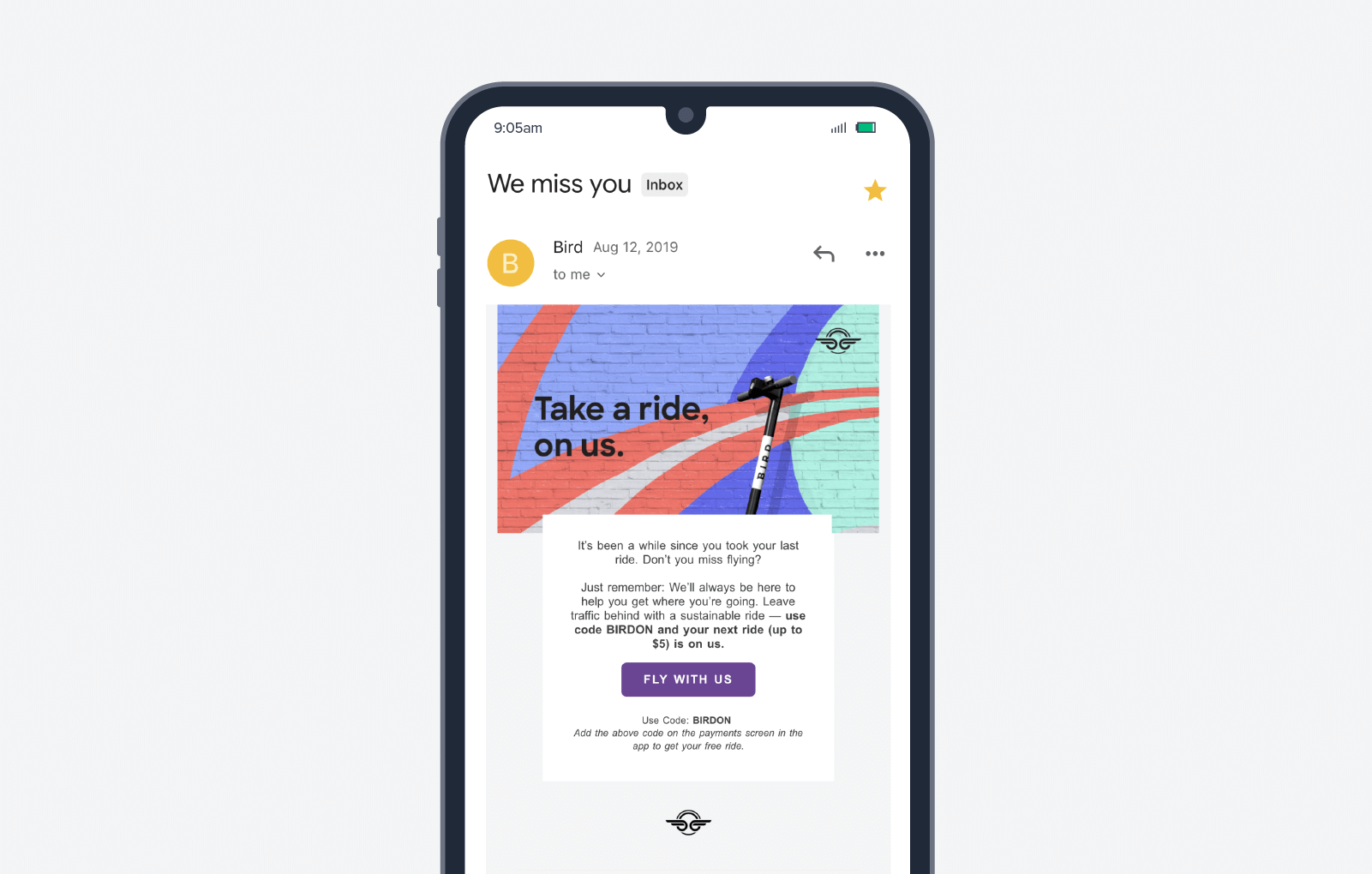
Key takeaways:
- Pique customer’s interest with conversational, personalized subject lines
- Offer discounts, free shipping, or another similar incentive
- Use win-back emails to remind customers of benefits, but don’t make it impossible for them to leave
Use Marketing Automation for Customer Engagement
Remember how our customer engagement definition is simply “strategies to keep a customer interested in the brand?” Well, marketing automation is the machinery that executes those strategies. It is also the gold standard for customer engagement, with 91% of users believing marketing automation is very important to success across multiple channels.*
Want to deliver high-quality email campaigns that get opens and clicks? Check out our email automation services or get a demo today.

A Complete Guide to User Engagement
Shivkumar M 
Head Product Launches, Adoption, & Evangelism.Expert in cross channel marketing strategies & platforms.
Free Customer Engagement Guides
Join our newsletter for actionable tips and proven strategies to grow your business and engage your customers.















































